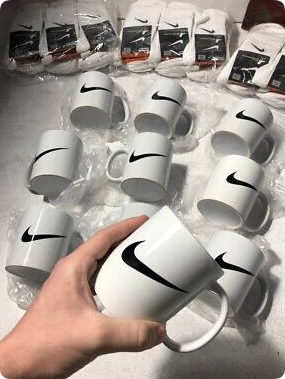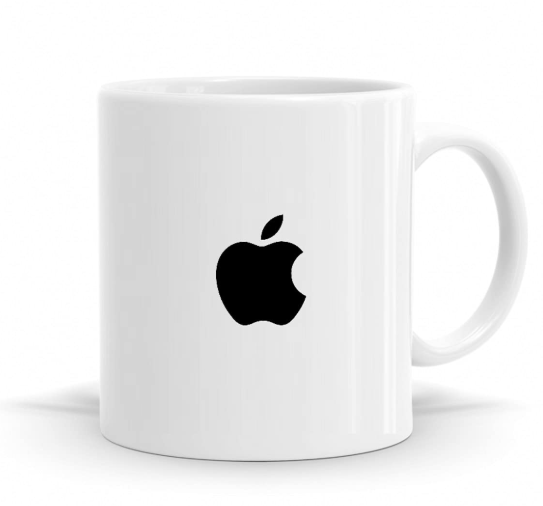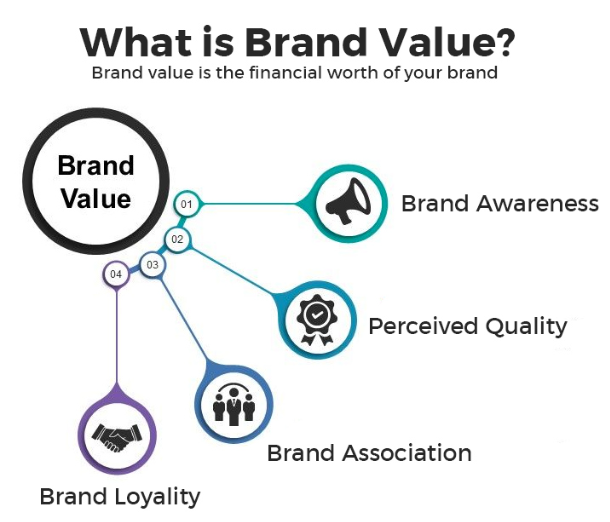An in-depth guide on the essentials for creating a powerful logo that stands out
Introduction
In today’s fast-paced world, a brand’s identity is its most valuable asset. One of the most critical elements of that identity is the logo. Whether you’re designing a logo for a large corporation or a small business, creating an effective logo that resonates with your target audience is essential. But what makes a logo successful? There are several design principles that, when followed, can help create logos that are timeless, memorable, and impactful.
In this blog, we will dive deep into the three essential rules of good logo design. We will also explore how custom logo design applies to various products, with a specific focus on ceramic mugs, and how businesses can implement these principles to achieve optimal branding.
1. Simplicity: Keep It Clean and Clear
The first rule of good logo design is simplicity. A good logo should be straightforward, uncomplicated, and easy to understand at a glance. Complex logos with intricate details or too many elements tend to confuse viewers, and they lose their impact. A simple design allows the logo to be easily recognizable and scalable across various mediums.
Why is Simplicity Important?
- Memorability: Simple logos are easier to remember. Think of iconic logos like Nike, Apple, or Coca-Cola—they are all minimalistic yet recognizable anywhere in the world.
- Versatility: Simple logos look great on a wide range of materials, from business cards to billboards. They can be scaled up or down without losing their integrity.
- Timelessness: Simplicity ensures that a logo doesn’t become outdated. Overly complex or trendy logos can quickly lose relevance.
Examples of Simple Logos
- Nike: The famous “Swoosh” is simple yet powerful, instantly conveying motion and athleticism.

- Apple: The apple with a bite taken out is simple but communicates the brand’s essence—innovative, sleek, and clean.

2. Relevance: Aligning Your Logo with Your Brand’s Identity
The second rule of good logo design is relevance. A logo must be relevant to the brand’s values, industry, and target audience. It should communicate the essence of the brand’s message, evoke the right emotions, and align with the business’s mission.

How to Ensure Relevance in Logo Design?
- Understand Your Brand: Before designing a logo, a deep understanding of the brand’s mission, values, and target market is essential. A logo for a toy store will differ vastly from a logo for a law firm.
- Industry Considerations: Consider the norms and expectations of your industry. For example, logos for tech companies might have sleek, modern designs, while logos for natural products might include earthy tones and organic shapes.
- Emotional Connection: The logo should evoke the right feelings. For example, a logo for a healthcare company might aim to inspire trust and safety, while a logo for a sports team could evoke energy and passion.
Example of Relevant Logo Design
- McDonald’s: The golden arches of McDonald’s are both simple and relevant. The yellow color evokes warmth and happiness, aligning with the brand’s image as a family-friendly fast-food chain.
- Tesla: Tesla’s logo reflects modernity and innovation, which is consistent with the brand’s positioning as a leader in electric vehicles and clean energy.
3. Scalability: Logos Must Look Great Everywhere
The third rule of good logo design is scalability. A logo must look good at any size and across various mediums. Whether it’s printed on a business card, displayed on a website, or blown up on a billboard, the logo should maintain its clarity and impact.
Why is Scalability Crucial?
- Brand Recognition: A scalable logo ensures that your brand is easily recognizable, no matter where it’s displayed.
- Consistency: A logo that works across multiple sizes and platforms ensures consistency in your brand’s messaging.
- Flexibility: A scalable logo can be adapted for various uses, whether digital or physical, from social media profiles to packaging and merchandise.
Example of Scalable Logos
- Twitter: The “bird” logo looks just as good on a mobile app icon as it does on a large screen or billboard.
- Coca-Cola: The classic cursive text of Coca-Cola works across various formats, from small labels to massive billboards, without losing legibility or impact.
How Custom Logos Apply to Ceramic Mugs
Logos are more than just graphic elements—they’re a reflection of a brand’s identity, and in some cases, they are applied to physical products. A prime example is ceramic mugs. Custom logo mugs are a popular choice for businesses looking to promote their brand, distribute promotional items, or create personalized products for customers.
Custom Logo Ceramic Mugs: How Can They Be Used?
Custom logo mugs are incredibly versatile and can be used in various settings:
- Corporate Gifts: Many companies use custom mugs as corporate giveaways, offering them as promotional items at trade shows or including them in welcome kits for new employees.
- Retail: Mugs with logos are also popular in retail environments, especially for businesses that want to extend their brand to consumer goods.
- Personalized Gifts: Customized mugs make great gifts for holidays or special occasions, allowing businesses to offer unique products that foster customer loyalty.

Ceramic Mugs and Custom Logos: Methods of Application
Creating a custom logo on a ceramic mug can be done using several techniques. The choice of method depends on the complexity of the logo, the desired aesthetic, and the quantity of mugs needed.
Methods for Applying Logos to Ceramic Mugs:
- Screen Printing: The most common method for large runs of mugs, screen printing uses stencils to apply the logo to the surface of the mug.
- Sublimation Printing: This method uses heat to transfer the logo onto the mug, offering vibrant colors and high detail.
- Pad Printing: Suitable for smaller runs and more intricate designs, pad printing uses a silicone pad to transfer the logo onto the mug.
- Decal Application: A popular method for ceramic mugs, decals are printed on special paper and then transferred onto the mug using heat and pressure.
@ekaceramic2014 Take a behind-the-scenes look at how our **Christmas ceramic mugs** are made! 🎄 From crafting the perfect shape to carefully applying **custom decals**, every detail is designed with care for your brand. As a B2B buyer, you can customize everything—from the mug design to the holiday-themed decals! 🎁 Get ready for the holiday season with **factory-direct** production, ensuring high quality and timely delivery. Contact us today for bulk orders and let’s create your perfect Christmas collection! 🎅 #ChristmasMugs #CustomCeramics #B2BSourcing #FactoryDirect #HolidayMerch #CustomDecals #BulkOrder
♬ chill beat – Official Sound Studio
The 3 Standards of a Good Custom Logo
When creating a custom logo for ceramic mugs, it’s important to adhere to certain standards to ensure that the logo remains effective and impactful. These standards are based on the general principles of good logo design:
| Standard | Explanation | Example |
|---|---|---|
| Clarity | Ensure the logo is legible and easy to understand. Avoid small text or intricate details that won’t show clearly on a mug. | Nike’s simple “Swoosh” |
| Contrast | Use contrasting colors to make the logo stand out, especially on a white or neutral-colored mug. | Starbucks’ green and white logo |
| Brand Alignment | Ensure that the logo is in line with the brand’s identity and message. A logo on a ceramic mug should reflect the values of the business. | Coca-Cola’s timeless red logo |
Frequently Asked Questions (FAQ)
1. How long does it take to design a logo?
The timeline for designing a logo depends on several factors, including complexity, revisions, and the designer’s workload. On average, it can take anywhere from a few days to a few weeks.
2. Can I use a logo for multiple products?
Yes, a good logo is versatile and can be used across various products, from ceramic mugs to T-shirts, stationery, and digital platforms.
3. What is the difference between a logo and a brand identity?
A logo is a visual symbol that represents a brand, while brand identity includes the entire set of visual and non-visual elements that define the brand, including typography, colors, messaging, and tone.
Conclusion
A good logo is the cornerstone of a brand’s identity. By focusing on simplicity, relevance, and scalability, businesses can ensure that their logos are not only aesthetically pleasing but also impactful and memorable. For businesses looking to customize products like ceramic mugs with their logo, adhering to these design principles will ensure that the final product aligns with the brand’s values and resonates with customers.
At EKA, we specialize in ODM (Original Design Manufacturing) and OEM (Original Equipment Manufacturing) services, providing customized ceramic products such as mugs and flower pots for B2B clients worldwide. Whether you’re a large-scale retailer or a small batch cross-border e-commerce seller, our team is here to support your branding needs with high-quality, tailored solutions.

